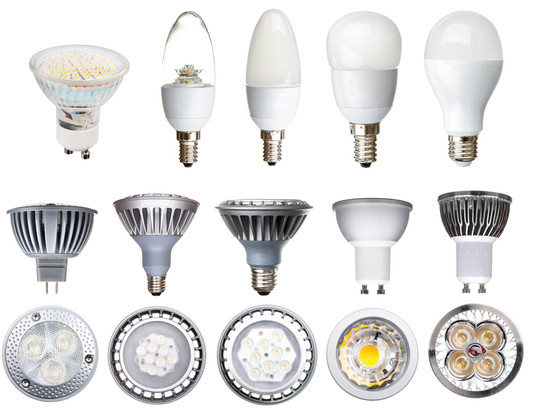Common Bulb Types and What They Mean for You
May 19th 2020
Ever find yourself staring at all the options in the lighting aisle completely frozen because you forgot to bring the bulb you’re trying to replace to the store with you? Don’t feel bad. We’ve all been there. To help avoid this paralysis in the future, here’s a handy guide to common bulb types and their usual uses.
A-series bulbs
The most common bulb shape. The kind that everyone pictures when talking about a light bulb and the one that gives cartoon characters all their ideas. The “standard” bulb is typically the A19. The “A” refers to the shape, whereas the “19” refers to the diameter at its widest point, and is measured in eighths of an inch. An A19 bulb (also designated A60 in countries where the metric system is the standard) has a diameter of approximately 2.4 inches. Though this designation was originally created for incandescent bulbs, compatible CFL and LED bulbs use the same terminology.
BR-series bulbs
These are versatile, directional lighting bulbs that typically have a “wide-flood” beam angle. The “BR” in the name stands for “bulge reflector,” which refers to how the bulb flares or bulges as it moves away from the base. The most common is the BR30. The “30” refers to the diameter at the widest point in eighths of an inch. A BR30 has a diameter of approximately 2.75 inches.
B-series bulbs
These B-series lights are also known as “candelabra bulbs” and have a torpedo-like shape. They are mostly used in decorative lighting and typically aren’t as luminous as other “traditional” bulbs. Another key difference is the size of the base. Typically B-series bulbs us a smaller screw base. Whereas a standard A19 uses a base known as E26, many B-series decorative lights use the smaller E12 fitting. The “E” stands for Edison and the number refers to the diameter of the base itself. These smaller bases are great for more decorative purposes, but, at least in the era of incandescent bulbs, didn’t allow for as much power throughput. Meaning these lights typically maxed out around 40 watts and were used as accent features rather than main sources of light in a room. LED B-series bulbs can produce more light with less energy and are dimmable to accommodate your fixtures and create the perfect lighting conditions.
G-series bulbs
G-series or “globe” bulbs are what you typically see in bathroom vanities or on Hollywood stars’ dressing room mirrors. They can be frosted or clear and give off light in all directions. Globe bulbs are more decorative and typically take up more room than a standard A-series bulb.
PAR bulbs
Parabolic aluminized reflector (PAR) bulbs historically had a parabolic mirror inside to focus the light into a single, strong beam. Modern LED bulbs lack the same internal structure, but the effect is the same. They produce about four times the concentrated light intensity of general service (A), and are used in recessed and track lighting. Weatherproof casings are available for outdoor spot and flood fixtures.
There are many kinds of recessed downlights. PAR bulbs were often used in traditional downlight fixtures. Whereas traditional fixtures contained separate housing and trim pieces, modern LED fixtures often come self-contained where the light itself includes the trim. It is easy to retrofit an existing recessed fixture with cost-saving LEDs. Often minor modifications aren’t needed and the light simply screws into the existing base and snaps into place against the ceiling.


